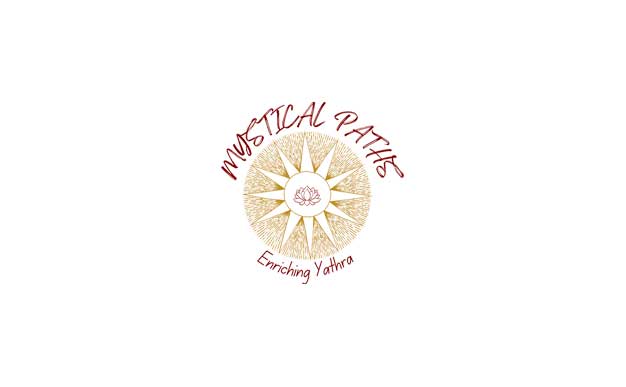Blog Details
A tome on Vishnu
The book bears the title of an exhibition that was opened in North America and coordinated by the First Center for the Visual Arts drawing from at least 45 collections in the U.S. Going by the book, this seems to have been a superb exhibition and the text and the photos of the exhibits do full justice to what seems to be a mammoth and ambitious undertaking.
The various images of the exhibits are intermingled across three important and well-written themes that governed the layout of the objects.
Part 1: The image of Vishnu, his attributes, his consorts, his female form, Garuda and legends associated with him.
Part 2: Deals with his avatars and the various images of Vishnu.
Part 3: Deals with the worship of Vishnu.
In all parts the text is lucid, yet packed with information. Joan Cummins, in her introduction, offers an excellent analysis of the Hindu religion and presents the uniqueness of the religion with a variety of choice for the spiritually inclined and the plethora of sub cultures the religion contains. She believes this is because of its age and because, it is a religion that has no single prophet/founder and has therefore grown in a cumulative process so that, “two people might find themselves praying next to each other in a Vishnu temple, repeating the same words and looking at the same sculpted icon, while holding radically different visions of the god and completely divergent spiritual objectives.”
Two epics
The chapter also looks through the development of Vishnu as a relatively minor god in the Vedas (compared to Agni or Indra), on to a more powerful god in the two epics about him and then post that in the Bhakti movement as an important and the “only” god for several communities.
The earliest recorded image of Vishnu is from the first centuries of the Common Era; the temples to him from the 4{+t}{+h} to 6{+t}{+h} centuries CE.
Doris Meth Srinivasan's “Becoming Vishnu”, traces the role of a Vedic deity of Vishnu who grew larger with the merging of a deified sage, Narayana and a group of deified clan heroes called the Vrishni Viras. Vishnu was a Vedic deity associated with Surya but as centuries progressed, Surya and his worship himself became a part of the Suryanarayana cult. These processes of assimilations and incorporations were over several centuries in various levels of intensity and, to say the least, very complex! The text navigates this with precision, lucidity and accuracy. An interesting twist we also read is the incorporation of Buddha as an avatar of Vishnu. The incorporation is not new but it is suggested that it may have been a way for mainstream Hinduism to accommodate back the many Buddhists who converted to Hinduism.
The Panchavira cult that brought Vasudeva to prominence is discussed in detail and we have a superb illustration of the five heroes: Samkarshana/Balarama, Vasudeva/Krishna, Pradyumna, Samba and Pradyumna. In the middle is Narasimha with the body of a lion. The relief is from Kondamotu, AP, dated early 4{+t} {+h} century.
Vishnu's manifestations in the Tamil country get a separate essay, justifiably given the age of the Tamil language. The references to his form and attributes in the Alwar's hymns and the Silapadikaram come for scholarly discussion but surprisingly not the Paripadal. The worship of Srinathji and the following of Chaitanya are discussed in detail with many excellent illustrations. The worth of the chapter is the detailed account of how, “the sensory combination of art, theatre, and religion is concentrated and powerful” and makes the few minutes of viewing the deity a powerful and lasting one.
The images of Vishnu especially those from the 4{+t}{+h} century CE (Gupta dynasty) are stunning. The larger one is armed with the conch and the butter ball on either hand and age and time have not withered away the sublime peace from the face. A special treat was the many splendid images from West Bengal and Bangladesh, the earliest from the 5{+t}{+h} century in terracotta. Tamil traditions are represented by Pallava and Vijayanagara stone and bronze images.
Vishnu's attributes and consorts are also well represented with images from the east, north (Kashmir especially) south and west; a 7{+t}{+h} century North-Eastern two-sided stele of Vishnu and Durga flanked by attributes being a particularly fine specimen.
Substantial parts of the book, understandably, are the images in the exhibition on the avatars of Vishnu. The introduction tantalisingly lists more than the 10 we are familiar with but sadly doesn't mention them. Each avatar has a note with the stunning artefacts. Buddha and Balarama are counted in and there is a special set of images dedicated to Hanuman.
Miniatures from Punjab, Rajasthan, bronzes from the south, including a splendid image of Varaha from Kerala, stone and bronze works from the west and north make the pages a sumptuous feast with the captions being pertinent and informative. An 18th century Tanjore painting with doors and an image of Shivaji II, a Pala statue of Vamana from the 13{+t}{+h} century, a 5{+t}{+h} century terracotta Gupta plaque of Balarama, a multi-faced Vaikunta Vishnu from Kashmir from the 8-9{+t}{+h} centuries are some of the many superb images. A 17{+t}{+h} century Lampas woven fragment from Assam and jewellery were some of the rarer exhibits not made of stone/bronze.
The book concludes with a note on the worship of Vishnu especially as Jaganatha and Srinathji. Disappointingly the Salagrama worship rituals are not mentioned.
The book on the whole for the price of Rs.3,500 does justice to the vast topic and the illustrations are superb and with many of them probably never displayed, are well worth admiring in this tastefully designed tome.
